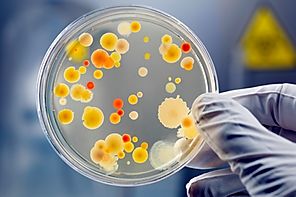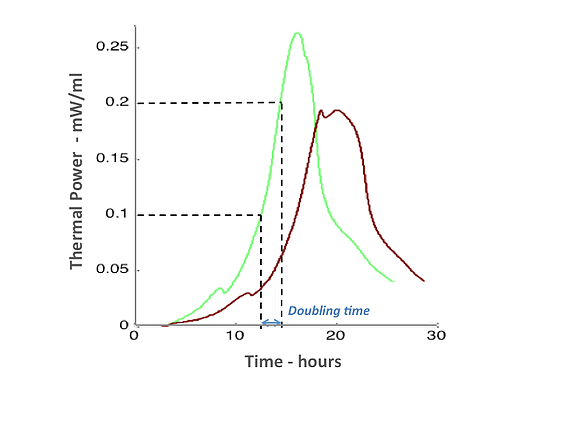Isothermal Calorimetry in Microbiological Studies
Calorimetry as a complement to plate counts. Monitor microbial activity continuously and in real time.
Overview

Calmetrix isothermal calorimeters measure the thermal power, or heat production rate, from an active sample from less than 1 to 450 ml in size. The measurement is direct and continuous, which is a significant advantage over traditional methods used to measure microbial growth such as plate counts. Because of the large sample size, microbial growth can be monitored on a variety of substrates, even inhomogeneous ones. More significantly, isothermal calorimetry measures the heat produced in the whole volume of a sample and can therefore quantify microbial development for example in pores or inner parts of a sample. Calorimetry also provides a continuous measurement of microbial activity, a welcome complement to the information obtained by plate counts which are limited to a snapshot of microbial growth at a given point in time.
Typical uses of isothermal calorimetry in microbiological studies are:
-
Study the effect of accidental contamination
One can use controlled innoculation of microorganisms in a sample of a product such as food, cosmetics, medical devices and other items that are perishable or susceptible to contamination, and monitor the activity in a calorimeter.
-
study the impact of external factors on shelf life
-
perform quality control of packaged goods
-
conduct sensitivity studies of microbial growth rate by varying parameters such as temperature, pH, or the addition of certain chemicals
-
test the efficiency of different additives used as preservatives
-
-
Detect the presence of microorganisms
A substrate that is expected to be free of contaminants can be tested in a calorimeter by monitoring microbial growth in real time. The presence of microorganisms is seen as soon as the thermal power curve shows an onset of exponential growth. While plate counts would only show microbial activity on the surface of the sample in the plate, calorimetry can be applied to inhomogeneous or porous samples, e.g. to determine the antimicrobial properties of coatings and other treatment for various materials (including porous materials)
-
Quantify the exponential growth of microorganisms
Determining the doubling time and time constant of the exponential growth curve is easy to do in a caloirmeter in one single measurement (as shown in the curve to the right), when plate counts would require multiple samples at different points in time, i.e. significantly more labor and time.
Example: microbial growth in fermentation process

Two 50 ml samples of milk (substrate) with the same bacterial strain, but with different concentrations were tested at 23 °C. The thermal power measured mirrors the rate of bacterial activity in the samples. In the exponential phase, one can infer the doubling time as the time required for the thermal power to double. In this example, this is shown on the green curve as the duration between 0.1 mW/ml and 0.2 mW/ml, which can be read on the graphic as approximately 1.3 hours. We can also see from the graph that both curves have similar doubling times, which is expected since both contain the same bacterial strains. The red curve lags behind the green curve by approx. 3 hours.
A typical exponential growth curve is modeled by:
N(t) = N0 exp(kt)
Where N(t) is the number of bacteria at a given time t, N0 the initial bacterial concrentration and k a constant. One can infer from the doubling time of 1.3 h that:
k = ln(2)/1.3 = 0.54 h^(-1)
Furthermore, since the red curve lags behind the green curve by approximately 3 hours and the doubling time is 1.3 hours, one can infer that the initial bacterial concentration of the green curve was 2^(3/1.3) higher than the red curve, i.e. approximately five times higher.
